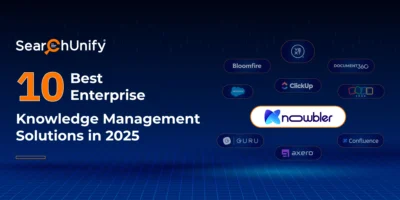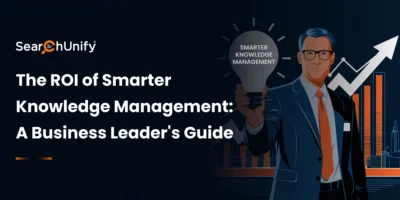
The amount of digital information created and replicated is growing by leaps and bounds.
The good news is
Enterprise search solutions help organizations to deal with this sea of data efficiently. Thus, streamlining the workflow, driving profits and making the right information available at the right time.
But the bad news is
A failed attempt in implementing this solution can be worse than a nightmare. Data in hand will be no less than a monster that will eat up your organization’s productivity along with profits.
As a result, firms continue to struggle with finding useful results despite using state of the art engines. The reason being, the prime focus of organizations is to embed technologically-competitive search solutions; and in the course of choosing the best cognitive search tool, they let go of other significant parameters that have been discussed below.
1. Search Strategy
Key to search success is a well-thought-out strategy. It will come as no surprise that the organizations that are taking a strategic approach to implementing search solutions are prospering. But the term ‘strategy’ could have different meaning and purpose for different organizations. Some may strive for enhanced self-service, internal engagement, collaboration, or a combination of all. Without a coherent search strategy, you’ll be simply shooting in the dark.
The objective of a search strategy is to define the desired findability state and guidelines to attain it.
2. Target User Groups
Once the search strategy is in place, it is a cakewalk to figure out users and use cases of cognitive search. Gone are the days when only the support team could reap the benefits of search solutions. Nowadays, organizations adopt AI-driven search tools for the entire enterprise. For instance, support reps use it for improving CSAT score and case deflection; community managers use it for enhancing audience engagement; the content team uses it to optimize content strategy; and the list goes on.
Speak to all the teams in your organization and bring them under the one umbrella of unified search. Do not forget to define the prioritized target groups and their information needs.
3. Content Strategy
Although enterprise search tools feature unified indexing, connecting every content source under centralized index messes up relevancy for end-users. Like your support team might need access to documentation, bug tracking systems, previous cases, etc. Thus, it is irrelevant to connect ‘blog’ as a content source because it’ll only increase the odds of an unnecessary item making its way into the results. Ascertain content sources that would drive relevancy for a specific team and enable crawling accordingly.
Enterprise search vision is incomplete without a full-fledged content strategy. The key ingredient of a successful content strategy is focus on the right content, not all the content.
4. Stakeholders’ Interest
Despite having a dedicated search program, there is a gap between needs and efforts when it comes to findability. Would it be feasible to purchase the best enterprise search engine and hold one team accountable for its operations? No siree! Search demands an ongoing operational methodology just like any other enterprise software. It’s only as good as the staff handling it. Yet in many organizations, search has no real owner. It’s a part-time job that is mostly taken up by the IT team.
There’s no denying the fact that the IT team can ensure the solution is a good fit for your infrastructure and keep it up and running. But are they the best people to ensure the accomplishment of search objectives? Say your search strategy laid emphasis on improving internal collaboration and employee engagement. To ensure that your outlined search goals are met, a dedicated team consisting of people from project/product management and HR needs to constantly work with IT to oversee things.
Ideally, a well-run search requires a small search-oriented team who is responsible for day-to-day operations, updates, analytics, and training.
5. Search Budget
Rarely do I come across a department that has an allocated budget for search. Mostly, it is just one team paying out of their budget while the entire enterprise cashes in on the solution. To ensure calculative investments on search initiatives, an organization must allocate a search budget to all the teams that are going to be benefitted. This way you can purchase and maintain search solutions efficiently while easily justifying the ROI.
A dedicated search budget helps you prioritize your spending, doing justice to the return on investments.
Need help with your enterprise search strategy? Here’s your guide!
We have mentioned this time and again, and it is worth repeating: Search is not “fire and forget” technology. It demands efforts and skills to ace. Same is the case when it comes to incorporating an enterprise search solution – You cannot simply get a high-tech tool and rest assured that all your search-related problems would resolve. Technology is just one element of successful enterprise search adoption. To know the top 10 secrets that no vendor will tell you about cognitive search, download our free ebook.











